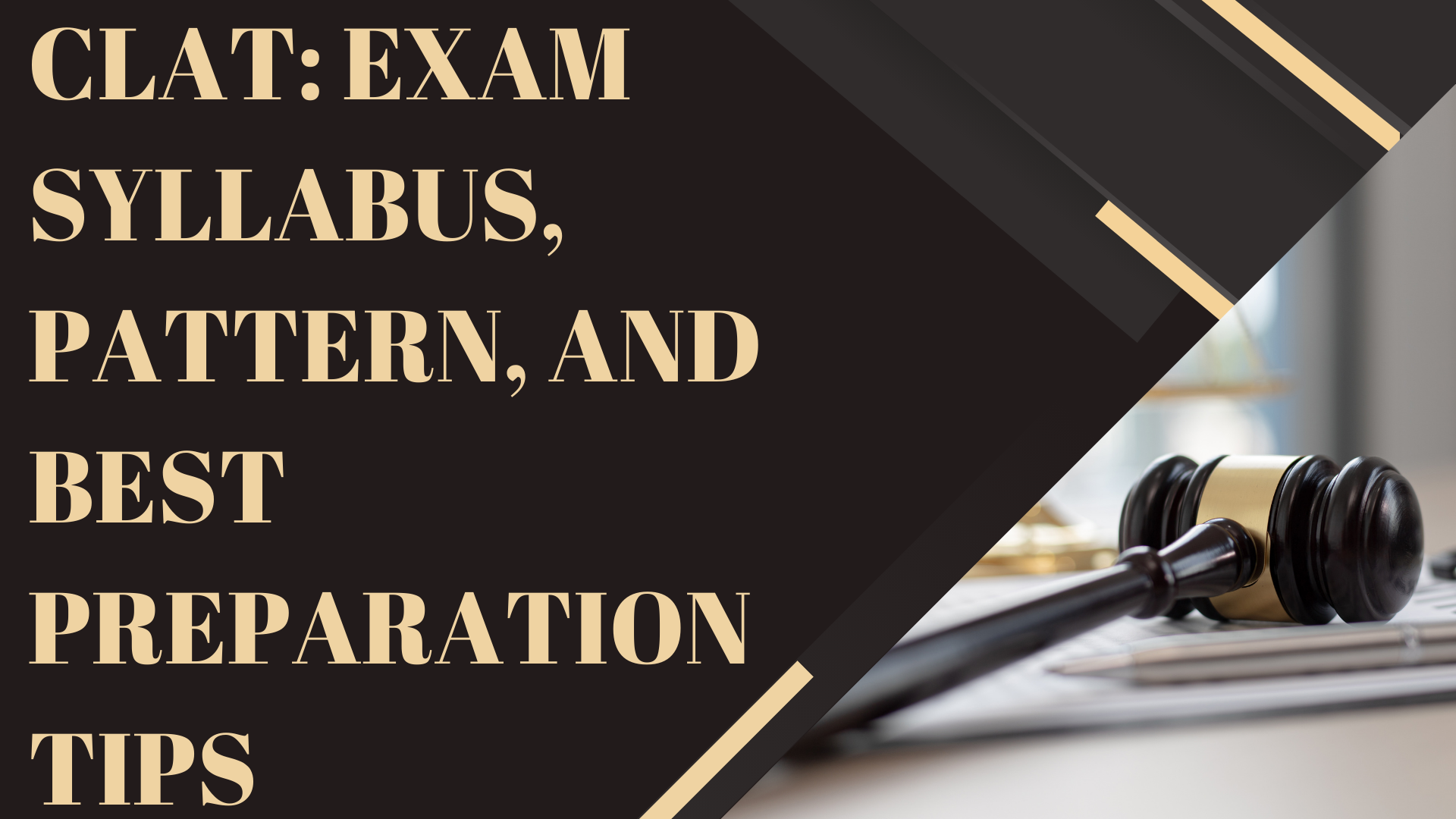In this post, we are going to discuss in detail the CLAT 2025: Exam Syllabus, Pattern, and also get some best preparation tips.
CLAT 2025
Being accepted into one of the top 26 NLUs, which are widely regarded as the starting point for a distinguished legal career, is the goal of every aspiring lawyer in India. However, achieving admission to the nation’s top legal schools is a difficult process that requires passing the CLAT 2025 test.
These prestigious National Law Universities (NLUs) and many other private law schools in India are accessible through the Common Law Admission Test (CLAT), a crucial national admission test. Prospective law students who want to enroll in undergraduate (UG) and graduate (PG) programs need to be well-prepared for this competitive test by knowing its content, format, and efficient study techniques.
CLAT Syllabus 2025
A comprehensive understanding of the syllabus is crucial for targeted preparation. Below is a detailed breakdown of each section:

-
English Language:
- Comprehension Passages: Interpretation of passages, understanding main ideas, themes, and authorial intent.
- Grammar and Vocabulary: Correction of grammatical errors, usage of appropriate words, and understanding contextual meanings.
-
Current Affairs, including General Knowledge:
- Recent Events: Awareness of significant happenings in politics, sports, awards, and international affairs.
- General Knowledge: Understanding historical events, geographical facts, and general science.
-
Legal Reasoning:
- Legal Principles: Application of legal principles to given situations.
- Fact Situations: Analysis of scenarios to deduce legal outcomes.
-
Logical Reasoning:
- Analytical Reasoning: Identification of patterns, logical links, and rectifying illogical arguments.
- Critical Reasoning: Evaluation of arguments, drawing inferences, and conclusions.
-
Quantitative Techniques:
- Arithmetic: Problems on ratios, percentages, and profit & loss.
- Data Interpretation: Analysis of data presented in charts, tables, and graphs.
More Details: Get Here
CLAT Exam Pattern 2025
English language, current affairs, including general knowledge, legal reasoning, logical reasoning, and quantitative techniques are the five components of the CLAT test, which consists of 120 multiple-choice questions (MCQs). Every right response earns one mark, while every wrong response costs 0.25 marks.
| Subject | No. of Questions | Percentage Weight |
| English Language | 22-26 questions | 20% |
| Current Affairs | 28-32 questions | 25% |
| Legal Reasoning | 28-32 questions | 25% |
| Logical Reasoning | 22-26 questions | 20% |
| Quantitative Techniques | 10-14 questions | 10% |
The CLAT 2025 exam pattern has been meticulously designed to assess candidates’ comprehension and reasoning abilities, essential for a successful legal education. The examination is conducted in pen-and-paper format, spanning two hours.
CLAT Eligibility criteria 2025
The authorities have outlined some essential eligibility criteria to be fulfilled in order to take the CLAT 2025 examination.
Educational Qualifications for the Position: The applicant must have received at least 45% of the possible points in their 10+2 or equivalent test from an accredited board (or 40% for SC/ST students).
Age Restrictions: There is no upper age limit to take the CLAT test.
Citizenship: Candidates must be either Indian nationals or those sponsored by the NRI.
Additional Requirements: Students who have previously been convicted of a crime, engaged in academic dishonesty, or faced disciplinary action are not eligible to be admitted to any law school via CLAT.
You can also verify your eligibility to take the exam by visiting the official site of CLAT 2025.
CLAT Exam Best Preparation Tips 2025
Achieving success in CLAT 2025 necessitates a strategic and disciplined approach. Here are some essential preparation tips:
Know the syllabus and the format of the exam:
Learn the precise curriculum and the format of the test in full. This first stage guarantees that there is clarity on expectations and topics to concentrate on.
Create a Plan for Structured Studying:
Based on your skills and shortcomings, assign distinct time slots to each area of your study calendar to create a realistic and well-balanced plan. The secret is consistency and frequent changes.
Develop Better Reading Habits:
In addition to enhancing comprehension abilities, reading newspapers, journals, and legal articles on a regular basis keeps you informed about current events. Both the General Knowledge and English portions benefit from this practice.
Engage in Regular Practice:
Solve past years’ question papers and take practice exams frequently to become more accustomed to the format of the examination, increase your speed, and pinpoint your areas of weakness.
Emphasis on Weaknesses
Determine which areas provide difficulties for you and invest more time in strengthening them. Enrolling in preparation classes or asking mentors for advice might offer organized support.
Effective Time Management
Learn how to effectively manage the time given for the test. Building confidence and lowering fear can be achieved by practicing finishing parts within the allotted time.
Remain Updated:
Verify the Consortium of NLUs’ official releases on a regular basis for any adjustments or modifications to the test format and curriculum.
Thanks a lot for reading this post with our portal.